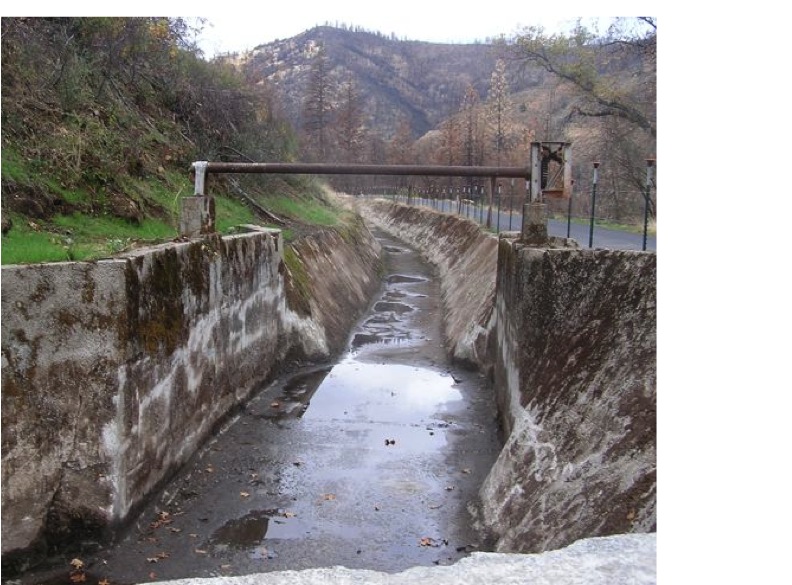This year there was almost no snowpack left at the end of the spring season – compounding the drought conditions that add to three previous dry years. So it is understandable that the San Francisco Public Utility Commission (SFPUC) and Hetch Hetchy Water and Power (HHWP) are partnering with the U.S. Forest Service to try to gain approval for a back-up water supply option.
Called the Lower Cherry Aqueduct Emergency Rehabilitation project, the utilities put forward a plan to rebuild a long-unused canal and pipe system (below at right) to divert 48,000 acre feet of water into their “mountain tunnel” at Early Intake. That would result in that huge amount of water being delivered to the Bay Area rather than flowing down the river below Early Intake as normal.
Photo courtesy Phil Schermeister
CSERC openly accepted that massive diversion of water to meet legitimate drought relief needs for Bay Area water customers, but we pressed the USFS and SFPUC to do something reasonable to mitigate for the huge amount of water that would no longer flow down the river. At first the response from both agencies was to simply dismiss any impact from that all that water being diverted. When CSERC filed an “Objection” appeal that could lead to a lawsuit, both agencies began to discuss options to resolve the Issue. Over weeks of negotiations, CSERC put forward numerous offers to the SFPUC, trying to find a meaningful solution for the issue of mitigation. But all our offers were rejected. Just before this newsletter went to print, the USFS denied our Objection.
The negotiations revealed that instead of the aqueduct system only being used in a dry or drought year, that huge amount of water could actually be diverted out of the river in a subsequent year. So the project could simply end up giving HHWP flexibility for management objectives, rather than providing drought relief for Bay Area water users. Like a number of other proposed plans or projects in the local region, it is revealing that the USFS is once again siding with use, rather than siding with the environment.

